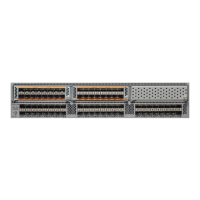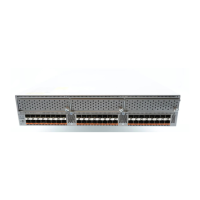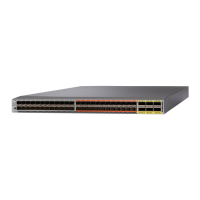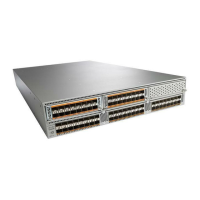CHAPTER 12
Configuring Fibre Channel Routing Services and
Protocols
This chapter contains the following sections:
•
Information About Fibre Channel Routing Services and Protocols, page 179
Information About Fibre Channel Routing Services and Protocols
Fabric Shortest Path First (FSPF) is the standard path selection protocol used by Fibre Channel fabrics. The
FSPF feature is enabled by default on the E mode and TE modeFibre Channel interfaces on Cisco SAN
switches. Except in configurations that require special consideration, you do not need to configure any FSPF
services. FSPF automatically calculates the best path between any two switches in a fabric. FSPF provides
the following capabilities:
•
Dynamically computes routes throughout a fabric by establishing the shortest and quickest path between
any two switches.
•
Selects an alternative path in the event of the failure of a given path. FSPF supports multiple paths and
automatically computes an alternative path around a failed link. It provides a preferred route when two
equal paths are available.
•
Bases path status on a link state protocol.
•
Routes hop by hop, based only on the domain ID.
•
Runs only on E ports or TE ports and provides a loop free topology.
•
Runs on a per VSAN basis. Connectivity in a given VSAN in a fabric is guaranteed only for the switches
configured in that VSAN.
•
Uses a topology database to keep track of the state of the links on all switches in the fabric and associates
a cost with each link.
•
Guarantees a fast reconvergence time in case of a topology change. Uses the standard Dijkstra algorithm,
but there is a static dynamic option for a more robust, efficient, and incremental Dijkstra algorithm. The
reconvergence time is fast and efficient as the route computation is done on a per VSAN basis.
Cisco Nexus 5000 Series NX-OS SAN Switching Configuration Guide, Release 5.2(1)N1(1)
OL-27583-01 179

